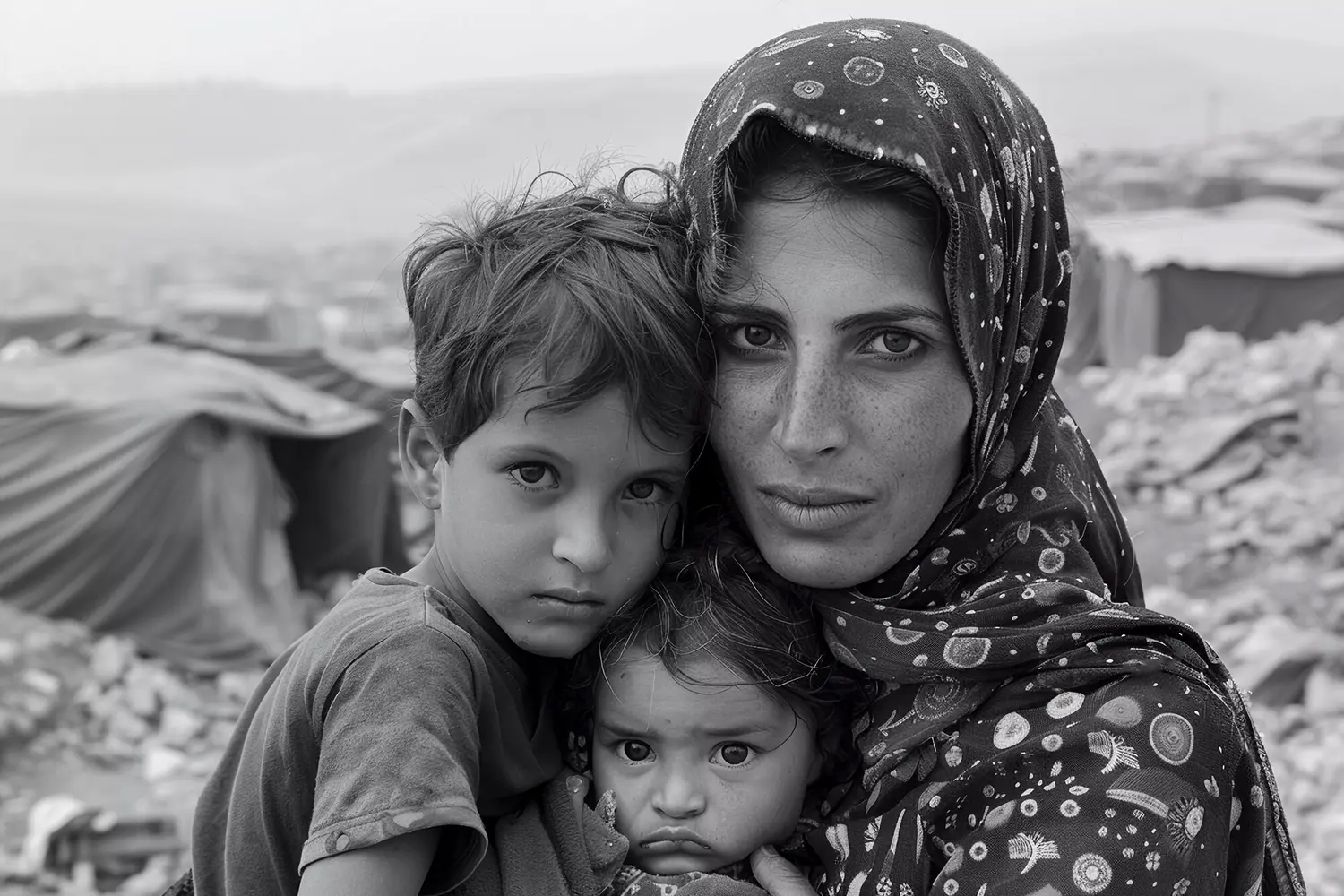
Prof. Magnus Marsden
Professor Magnus completed his PhD at Trinity College, Cambridge in 2002 and held research and teaching positions at Trinity and the Centre of South Asian Studies until 2007, before joining SOAS and later becoming Professor of Social Anthropology at the University of Sussex in 2013. His research, funded by major grants from the Leverhulme Trust, ERC (Advanced Grant), and AHRC, explores religion, globalisation, and identity in Muslim Asia, with a focus on Afghan trading networks and frontier spaces. He has conducted extensive fieldwork across Afghanistan, Pakistan, Central Asia, and China, working in multiple regional languages. His recent work examines diasporic Afghan communities and contributes to debates on cosmopolitanism and intangible cultural heritage. Beyond academia, he writes for public audiences and collaborates with artists, including Afghan photographer Moska Najib, with essays featured by Cambridge University Press, The Conversation, and the Haus der Kulturen der Welt in Berlin.
I’ll begin by thinking a little about the historical context behind what is going on in the country today. Then I’ll reflect on some of the scenarios and possibilities that emerged in the context of the Taliban’s return to power in Afghanistan after August 2021. Finally, I’ll offer a few thoughts on the future and potential ways forward—things that might be emphasised in terms of how people approach the country.
Historical Context Often Overlooked
Firstly, in terms of the historical context, I think something that’s often missed in popular or public debates and representations of Afghanistan is how the country is portrayed in the media—as remote, isolated, and somehow exceptional. These representations are entirely inaccurate. The territories that currently form Afghanistan are historically connected to multiple regions of South, Central, and West Asia—and beyond. These connections were forged through mobile people: those who travelled for trade, work, labour, education, and intellectual pursuits.
Afghanistan has historically been a dynamic and connected space—what some have called the “heart of Asia.” Unfortunately, that history is often overlooked. Instead, we hear terms like “the graveyard of empires,” which depict Afghanistan as nothing more than a place of death. This narrative sidelines the vitality and connectedness of Afghanistan, which has been undermined by over two centuries of colonial and imperial violence—both overt and covert—inflicted upon innocent people. This violence has brought chaos to their communities, families, and the places in which they live.
This history of violence goes back at least to the early 19th century, with the British Empire and its disputes and conflicts, using Afghanistan’s territories as part of broader imperial competition. It extended into the Cold War era, where the country became a contested zone between the USSR and the USA and their various allies. After 2001, this history of violence took on new forms in the context of the so-called global war on terror. These events have had profound effects on the people living in Afghanistan and the communities they formed.
Communities have been progressively cut off from the wider cultural, economic, and political worlds they historically inhabited. One can think of this as a process affecting people across Afghanistan. Consider northern Afghanistan and its historic connections to great centres of learning—religion, philosophy, and culture—in places such as Bukhara and Samarkand. Or consider its connections to South Asia, particularly India, which was historically a significant source of revenue and a destination for work, trade, and economic life.
Colonial Knowledge and Its Enduring Impact
Another profound effect of this history of violence is the way knowledge generated during colonial and imperial expansion has shaped how Afghanistan is understood—both externally and internally. This “colonial knowledge” has become part of the worldview of Afghan political elites, who often use categories imposed by imperial formations in their interactions with the wider world.
These categories have had profoundly negative effects—not only on how the world understands Afghanistan but also on the internal dynamics of the country. We can think of concepts like ethnicity, which oversimplify complex forms of cultural diversity. Afghanistan is often described as a mosaic society, but this richness is flattened by reductive labels. Similarly, the binary contrast between “majority” and “minority” is a political construct rooted in Western theory that fails to do justice to Afghanistan’s social and cultural complexity.
We must also consider how Islam and religion have been treated—particularly in the context of the global war on terror, which focused narrowly on radicalism. This framing overlooks Afghanistan’s history of interreligious interaction and coexistence. I’ve been exploring this recently through work with Afghan Sikhs, Hindus, and Jews, and it’s clear that these traditions of coexistence are deeply rooted and deserve far more attention.
The Post-2021 Landscape: Hopes and Realities
Turning to the return of the Taliban in 2021, I’m not an expert on this, and I haven’t been to Afghanistan since their return. So I won’t speak in specific detail—my co-panellists are far better placed to do so. But I want to reflect on some of the scenarios that were raised in 2021 and compare them to the reality that has unfolded since.
When the Taliban returned, there was shock, horror, and critique. But there were also voices who argued that the departure of international forces might make two things possible:
- Internal Dialogue: After decades of conflict—from the 1980s through the 2000s—there was hope that Afghans could begin to interact with one another, address shared trauma, and negotiate new arrangements. These conversations are difficult when tens of thousands of foreign troops and military bases dominate the landscape.
- Regional Solutions: Without American bases in Bagram and elsewhere, there was hope that regional powers—despite their differences—might work together to develop solutions for what is ultimately a regional issue.
From an outsider’s perspective, however, the reality has been disappointing. While embassies may have closed and troops withdrawn, Afghanistan continues to be influenced by external powers—especially through the same simplistic categories that shaped previous interventions.
Regional Dynamics and Their Failures
What about regional dynamics? Unfortunately, they’ve been largely negative. Consider the vast numbers of Afghans being returned from Pakistan and Iran—this puts immense pressure on the population and destroys livelihoods. Rather than expanding and deepening regional connections, we’ve seen further erosion, placing the well-being of Afghans in greater peril.
Afghanistan also remains caught between regional tensions. The India-Pakistan conflict, for example, may have influenced China’s decision to incorporate Afghanistan into the CPEC program. Recent events in Iran show similar patterns—rather than fostering regional consensus, Afghanistan continues to be strategically used by neighbouring powers.
Barriers to Dialogue and Human Rights
Let’s also consider the need for dialogue. In today’s world, that’s nearly impossible without a relatively open and functioning media environment. Yet media freedoms in Afghanistan are under serious pressure. This restricts the ability of people to discuss, debate, and address issues—especially those affected by ongoing violence against perceived opponents of the Taliban.
And then there are the ongoing restrictions on education, employment, and healthcare for women—half the population. When we hear claims of a “security dividend” following the Taliban’s return, we must ask: what kind of security are we talking about? If we consider broader human security and well-being, the situation continues to deteriorate.
Looking Ahead: What Should Be Emphasised?
Despite the challenges, there are things that can and should be emphasised in the future. From my perspective as an anthropologist, these are not necessarily hard policy recommendations, but rather areas that deserve greater recognition:
- Open Debate on Colonial Legacies: Events like this one are vital. We need open discussions about the ongoing impact of colonialism, intervention, and occupation on Afghanistan and its people. This knowledge must circulate not only outside the country but—more importantly—within it, so that Afghans themselves can critically examine the faulty prisms through which their country is viewed.
- Valuing Indigenous Knowledge: Local forms of knowledge—about Islam, culture, history, and geography—must be given greater value in discussions about Afghanistan. These perspectives are essential for addressing issues ranging from the economy to politics to culture.
- Including New Voices: There’s a real need to bring new voices and ideas into policy discussions. People whose perspectives are often ignored—those aware of Afghanistan’s connections, who live across boundaries, and who possess deep cultural and linguistic knowledge—must be heard. My work with Afghan traders continues to amaze me: their ability to live across multiple societies, speak multiple languages, and negotiate across political and ethnic divides is extraordinary. These skills must be better recognised.
- Addressing Environmental Catastrophe: Finally, the environmental crisis affecting Afghanistan—from climate change to the legacy of war—must be addressed collectively. Afghanistan is a remarkably beautiful and significant region within Asia, and its environmental future is inseparable from its political and social recovery.
Conclusion
Afghanistan is not a graveyard—it is a region of profound beauty, cultural richness, and human potential. To move forwards, we must rethink the frameworks through which we understand it, listen to its people, and support solutions rooted in its own histories and capacities.

Prof. Magnus Marsden
Professor Magnus completed his PhD at Trinity College, Cambridge in 2002 and held research and teaching positions at Trinity and the Centre of South Asian Studies until 2007, before joining SOAS and later becoming Professor of Social Anthropology at the University of Sussex in 2013. His research, funded by major grants from the Leverhulme Trust, ERC (Advanced Grant), and AHRC, explores religion, globalisation, and identity in Muslim Asia, with a focus on Afghan trading networks and frontier spaces. He has conducted extensive fieldwork across Afghanistan, Pakistan, Central Asia, and China, working in multiple regional languages. His recent work examines diasporic Afghan communities and contributes to debates on cosmopolitanism and intangible cultural heritage. Beyond academia, he writes for public audiences and collaborates with artists, including Afghan photographer Moska Najib, with essays featured by Cambridge University Press, The Conversation, and the Haus der Kulturen der Welt in Berlin.
Table of Contents
Toggle

